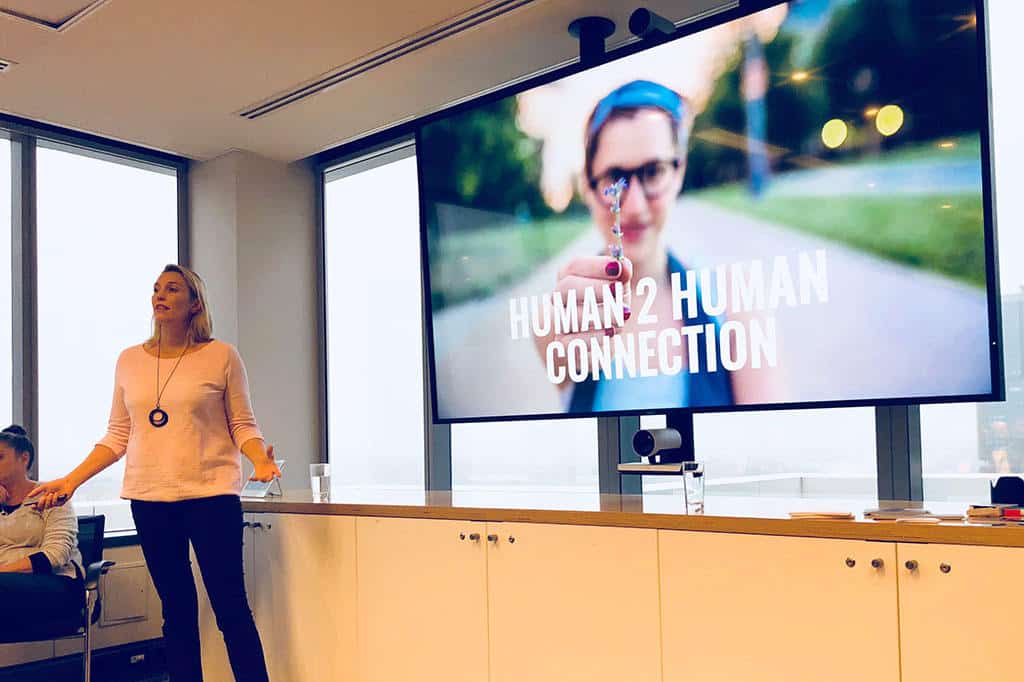3 Presentation Hacks You Need To Save Time And Lower Stress Levels

Research proves that many managers can spend 14 hours per week creating, delivering and attending presentations – many of which are vastly unproductive and amount to very little, if anything at all.
For a small team of 15 people that equates to over 10,000 man-hours a year. And it doesn’t take into account the stress involved to put the presentation together or attend something that very likely ended up in more work.
The problem is that most of us struggle to pull together a presentation together at the last hurried minute. Although there may be a dedicated person or team for a particular presentation, they are usually busy dealing with an increasing workload and competing deadlines.
So our presentations are usually dug up from the archives, with numbers updated to make them seem current. Aside from this being totally uninspirational for the audience who have viewed this reincarnated presentation before, it is also like trying to pull a rabbit out of a hat for the person presenting.
So here are 3 presentation hacks to save time and lower your stress levels the next time a presentation rolls around.
Hack 1: Cut it out
On average, only 10% of a presentation is remembered. This means most of what is said could be condensed or cut in half.
Any manager wanting to have an impact when they present must pick one clear message to structure their presentation around and then repeat that message throughout to make the message stick.
It is that one idea, purpose or point that is the glue that holds everything else together.
Once there is a clear bumper sticker message then it’s easy to figure out what the key take-home message is for the audience and what it is they should do as a result.
Anything else in the presentation that does not align to this message should be deleted, stripped out and banished. These days, what gets left out of a presentation is more important than what goes in.

Hack 2: Present, don’t report
Used sparingly, numbers add credibility to your arguments, but it’s important not to drown out your message with too much data.
Any research or background information can be stored in a separate document like a PDF, and emailed around either before or after the presentation for further reading.
This will make sure you don’t end up presenting a report! (An all-too-easy mistake.)
Make relevant statistics visually appealing by turning them into an infographic or illustration. Talk about the insight, rather than giving everyone the whole backstory. Time is precious – both when pulling together the presentation as well as actually presenting it to others.
Hack 3: Pay for the pros
Whatever way you look at it, presentations cost time and money. But the real investment is in your brand and business.
One bad presentation can cost you clients, customers and sometimes, even, careers. So if you’re really stretched or it’s really important then it can pay to bring in a professional.
For managers in all industries a presentation is an opportunity to plan how to communicate vision and generate value for employees, customers and buy-in with stakeholders that could influence a make or break situation.
Some agencies can help train your entire team to write, design and deliver powerful presentations. They can also help you set up templates and libraries of slides that you can use over and over again, as well as develop frameworks that will help you map out your ideas so you save time and wasted expense.
In any case, the aim of a professional presentation is to make sure you get a return on your investment. So ask yourself, what is your next presentation worth?
# Make a point for a message to stick in a presentation by Emma Bannister.
# How to create a winning presentation by Emma Bannister.
# How to avoid death by PowerPoint by Emma Bannister.
Bring the best of the CEOWORLD magazine's global journalism to audiences in the United States and around the world. - Add CEOWORLD magazine to your Google News feed.
Follow CEOWORLD magazine headlines on: Google News, LinkedIn, Twitter, and Facebook.
Copyright 2025 The CEOWORLD magazine. All rights reserved. This material (and any extract from it) must not be copied, redistributed or placed on any website, without CEOWORLD magazine' prior written consent. For media queries, please contact: info@ceoworld.biz








